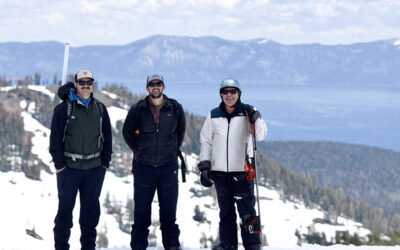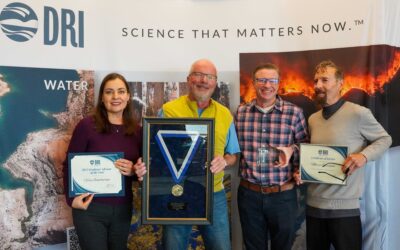The DRI ice core team is back in Greenland! This summer, the team is stationed at the top of the Greenland ice sheet at a permanent base named Summit Station.
In May and June 2023, the team is drilling a 150 meter-long, large-diameter ice core to measure methane and carbon monoxide trapped in bubbles in the ice. They are setting up a fully-operational ice core melter and analysis system in the field to try to better understand what processes impact these ice core gas records. Follow along for updates and pictures from the field.
Last year in “Return to Tunu,” we learned how aerosols, which are tiny particles in the atmosphere that come from desert dust, volcanic eruptions, wildfire smoke, or human pollution, can get trapped and preserved in ice cores. By collecting and analyzing an ice core, researchers are able to reconstruct past climate, pollution, and environmental history. In addition to aerosols, ice cores also trap tiny air bubbles that preserve the air from the Earth’s atmosphere, allowing scientists to reconstruct long-term histories of Earth’s atmospheric composition. These gas records are some of the most important records for climate science and understanding climate change. This project focuses on understanding both the chemistry of the ice and its air bubbles, and any potential connections between them.


